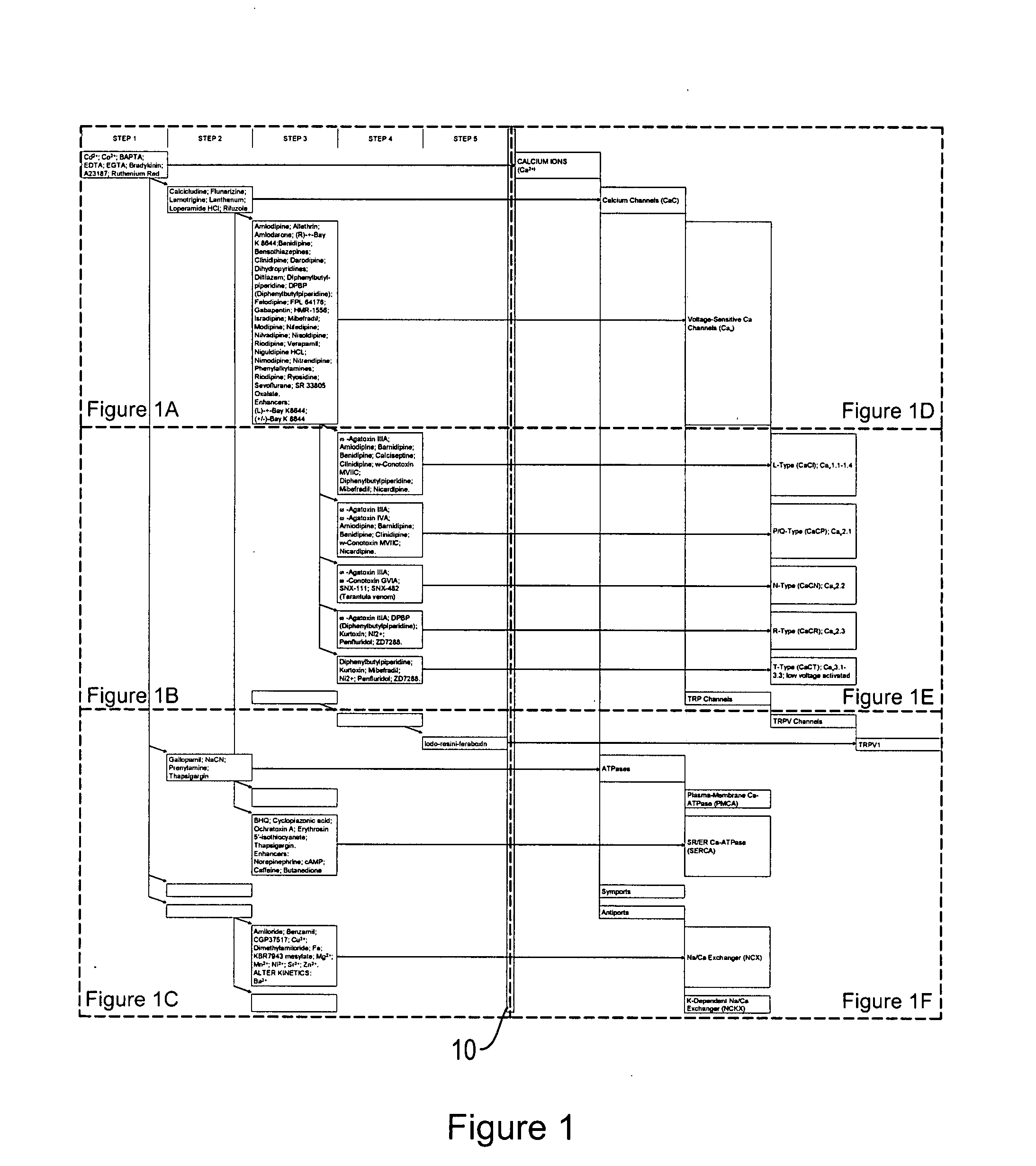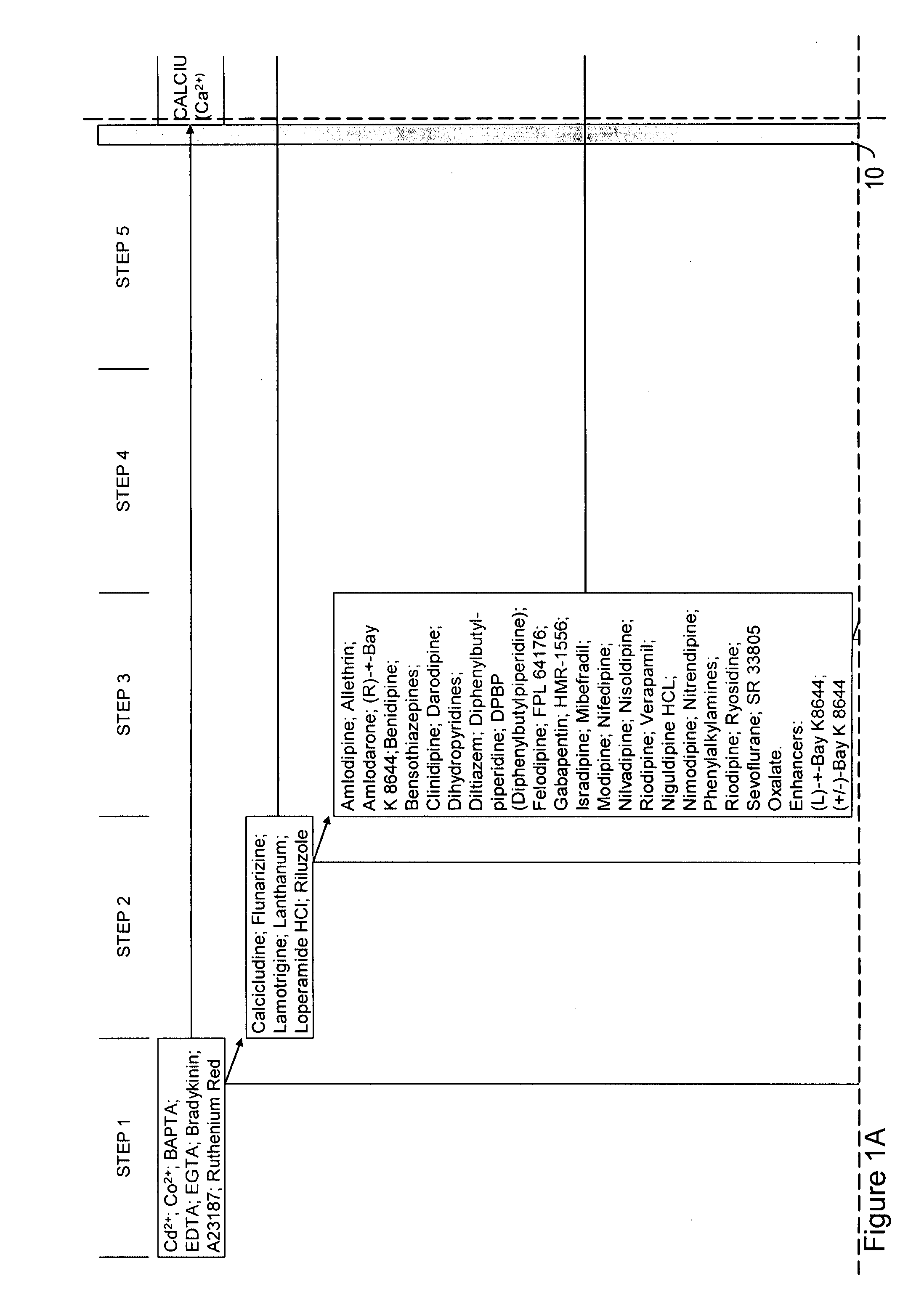Ion flux in biological processes, and methods related thereto
a biological process and flux technology, applied in the field of ion flux in biological processes, can solve the problems of incomplete understanding of the role of biophysics, lack of integration of biophysical, molecular and cell biological events during development and disease, and prior art failure to provide methods for effectively identifying what, etc., to achieve the effect of facilitating the identification of a candida
- Summary
- Abstract
- Description
- Claims
- Application Information
AI Technical Summary
Benefits of technology
Problems solved by technology
Method used
Image
Examples
example 1
Identification of a Role for Ion Flux in a Biological Process
Left-Right Asymmetry
[0401]We performed a compound screen to identify an ion transporter protein or a class of ion transporter proteins involved in left-right asymmetry. We employed a candidate approach to identify a manageable number of promising candidates for further molecular analysis. Briefly, groups of Xenopus embryos were treated from fertilization to stage 7 with inhibitors of various pumps, channels, and other ion transporters. Embryos cultured in the presence of compound were assayed to assess whether the compound had an effect on left-right asymmetry. Specifically, reversals of the heart, gut, or gall-bladder were assessed by morphological inspection at stage 45.
[0402]All of the reagents used in this screen were selected on the basis of high specificity for known electrogenic targets, and were titered to ensure that the DAI (dorsoanterior index) of the treated embryos was normal, thus avoiding confounding randomi...
example 2
H+-V-ATPase-Dependent, Asymmetric H+ Flux
[0409]We examined ion flux using a self-referencing ion probe to measure H+ flux from living early blastomeres. The H+-V-ATPase endogenously acts to pump protons out of the cell (e.g., it mediates proton efflux). We note, however, that other ion transporters modulate influx of ions. The term ion flux refers to movement of ions across membranes, regardless of the direction. The techniques provided herein can be used to evaluate changes in either ion efflux or influx, and thus can generally be used to evaluate ion flux and changes in ion flux following manipulation of an ion transporter protein or a class of ion transporter proteins.
[0410]We detected a large net efflux of protons from the cleavage furrow of the two-cell stage (in Xenopus embryos). This efflux averaged 12.7±22 pmole cm−2 s−1 (n=5) at about the midpoint of cleavage. Importantly, we also found evidence for asymmetry of H+-flux. As early as the four-cell stage, a distinct differenc...
example 3
Misexpression of an Ion Transporter Protein
[0414]To complement the experiments conducted using inhibitory compounds, we examined the effects of a gain-of-function treatment that would produce an excess, equal H+-flux across the plasma membrane on both sides of the midline. Because the H+-V-ATPase is a multi-subunit complex and may be difficult to re-constitute, we induced an ectopic H+ flux by expressing a well-characterized single-subunit plasma-membrane H+-pump, PMA1.2 (Masuda and Montero-Lomeli, 2000, Biochemistry and Cell Biol 78: 51-58). Use of this construct also allowed us to address whether it is the balance of H+ flux at the cell membrane that is important for LR asymmetry, since the H+-V-ATPase is also known to occur in vacuoles. In contrast, the PMA1.2 pump functions only in the cell membrane.
[0415]Misexpression of a H+ pump at cell surfaces throughout the embryo by microinjection of mRNA at the one-cell stage caused significant heterotaxia of embryos (PMA1.2=21% heterota...
PUM
| Property | Measurement | Unit |
|---|---|---|
| membrane potential | aaaaa | aaaaa |
| membrane potential | aaaaa | aaaaa |
| membrane potential | aaaaa | aaaaa |
Abstract
Description
Claims
Application Information
 Login to View More
Login to View More - R&D
- Intellectual Property
- Life Sciences
- Materials
- Tech Scout
- Unparalleled Data Quality
- Higher Quality Content
- 60% Fewer Hallucinations
Browse by: Latest US Patents, China's latest patents, Technical Efficacy Thesaurus, Application Domain, Technology Topic, Popular Technical Reports.
© 2025 PatSnap. All rights reserved.Legal|Privacy policy|Modern Slavery Act Transparency Statement|Sitemap|About US| Contact US: help@patsnap.com



